Removing Mould from Bathroom and How to Prevent
Table of Contents
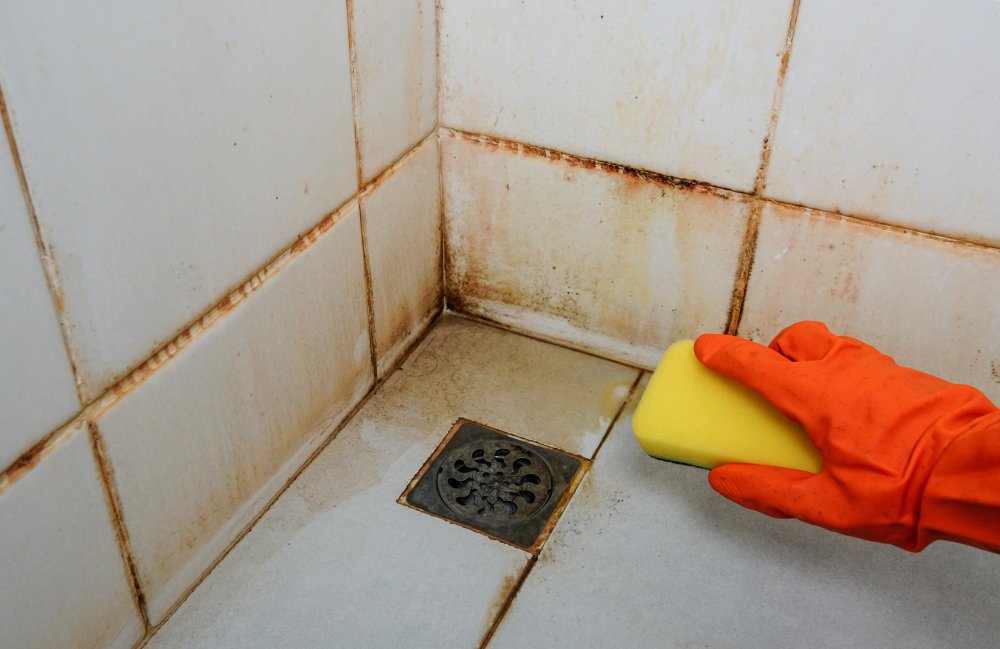
Mould is a fungus found in warm and damp places with excess moisture and little airflow, such as in bathrooms. Its growth can be mild and white-coloured at the start, which cannot be observed easily. Black mould can grow on walls, tiles, basins, bathtubs, showers, wood, wallpaper, drains, grout, sealant, shower curtain, or ceilings of bathrooms due to different reasons such as:
- Over time, condensation builds up when warm and moist air comes in contact with a cold surface after a bath or shower.
- Lack of ventilation in the bathroom
- Leaking water pipes
Health Risks of Mould
Mould growth can even lead to health problems such as the impact on breathing patterns, including infection, allergy, sneezing, runny nose, red eyes, skin rash, asthma or damage to the immune system. Health risks are higher among children, elders, or anyone with a medical history of skin issues or respiratory problems.
Signs of Mould Growth
Mould growth can be due to leakage in the pipe or moisture build-up. You can identify mould growth in your bathroom through different methods. In case of mould growth, you may feel a constant damp smell even in a dry and clean bathroom, brown or muddy and damp or slimy walls and tiles, blistered paint, cracked tiles, peeling plaster, dull coloured walls, soft or spongy flooring, visible mould, etc.
Cleaning Solutions
Following homemade solutions can be used to clean mould from the bathroom:
- Vinegar can be added over the spores by mixing it with water in a ratio of 2:1 and wiping it after 30 minutes.
- Alcohol or methylated spirit (70%) can remove smaller mould traces.
- Borax (baking soda) is readily available everywhere, and its solution with water helps prevent mould growth.
- Bleach can be used carefully to kill mould from curtain showers and tiles. Mix it with water in a ratio of 1:10 and rinse immediately.
You can also buy readily available cleaning solutions from any store, so you do not have to worry about mixing the solutions.
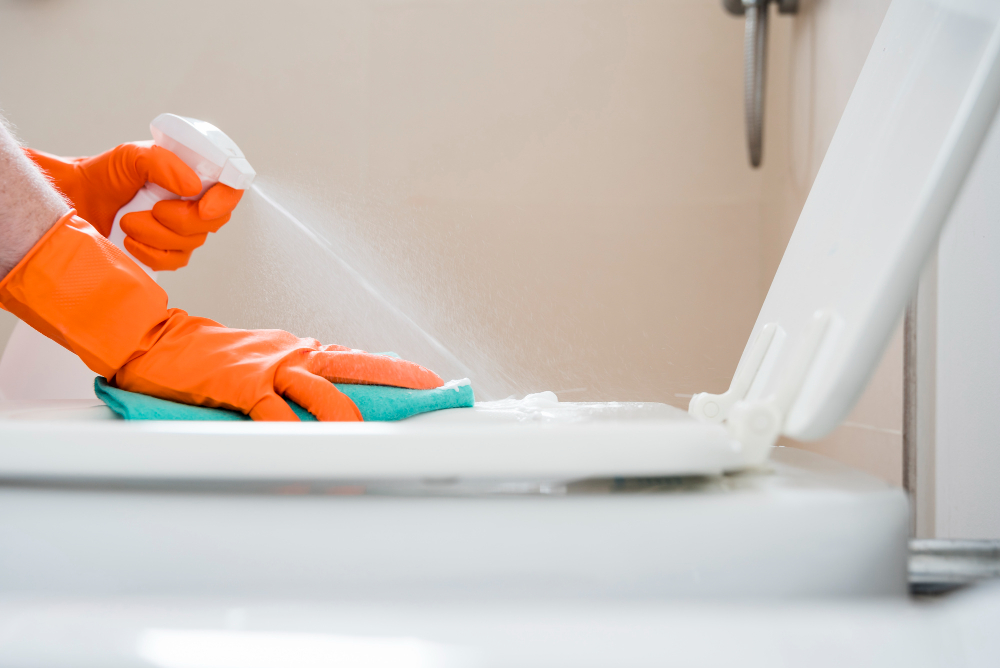
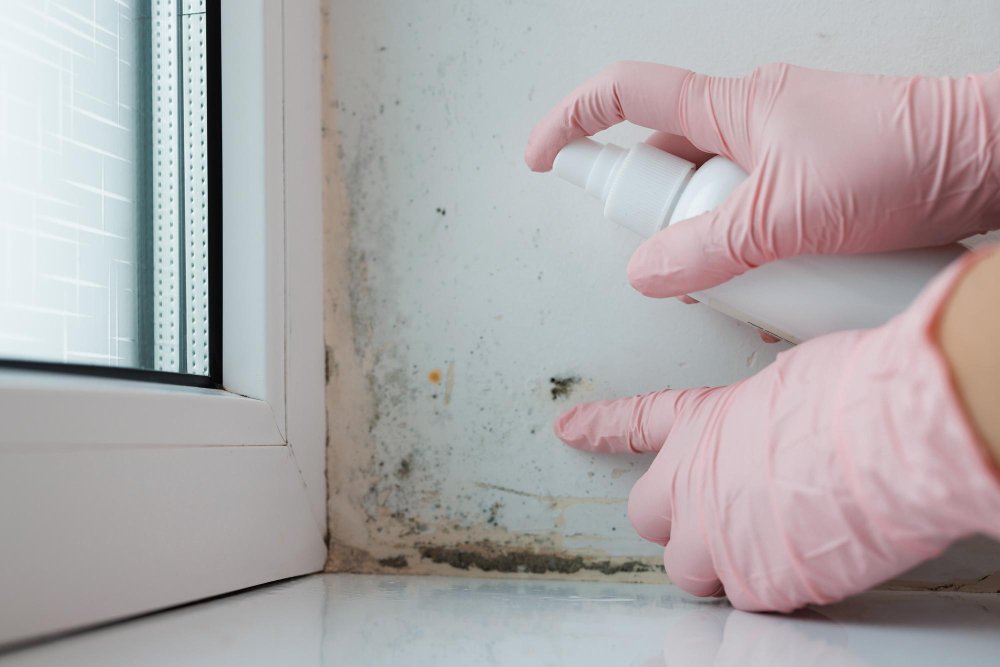
Removing Mould from the Bathroom
You should remove mould as soon as you observe it growing. Depending on the mould location and growth scale, you can remove it with a homemade cleaning solution. It is crucial to know the source of mould growth as well so that you can clean all the areas where you witness any mould growth as follows:
Removing Mould from Tiles and Smooth Surfaces
- Spray a cleaning solution on the area of mould growth
- Wait for it to soak in
- Use a cloth or sponge to wipe the mould
You should not over-saturate the area with a cleaning solution and only make a visible coating. If one side of the cloth becomes too dirty, use the other side. You can also use a scrubbing brush if you are having difficulty removing the mould.
Removing Mould from Grout
- Spray the cleaning solution on the affected area
- Scrub the surface with a toothbrush
- Rinse the surface to clean the spores
- Apply sealer to the grout to avoid mould formation again
You can use bleach or borax to beat the mould strength on the grout. While using the bleach for cleaning, use self-protective equipment and keep the window open for better ventilation. You can also use a screwdriver to scrape the mould from the grout.
Removing Mould from Bathroom Sealant
- Pour bleach on the affected sealant
- Roll some toilet paper pieces in a sausage-shape
- Place the toilet paper on it and allow bleach absorption
- Remove it after 12 hours
- Apply a new sealant
You can use a flat-head screwdriver to remove the mould. Make sure there is adequate bathroom ventilation when using bleach.
Removing Mould from Shower Curtains
- Add bleach/vinegar and washing powder in warm water and soak the curtain.
- Scrub the curtain with a brush
- Dry the curtain completely
It would help if you cleaned the shower curtains regularly. If the mould is not removed even after washing and scrubbing it, you must replace the curtains.
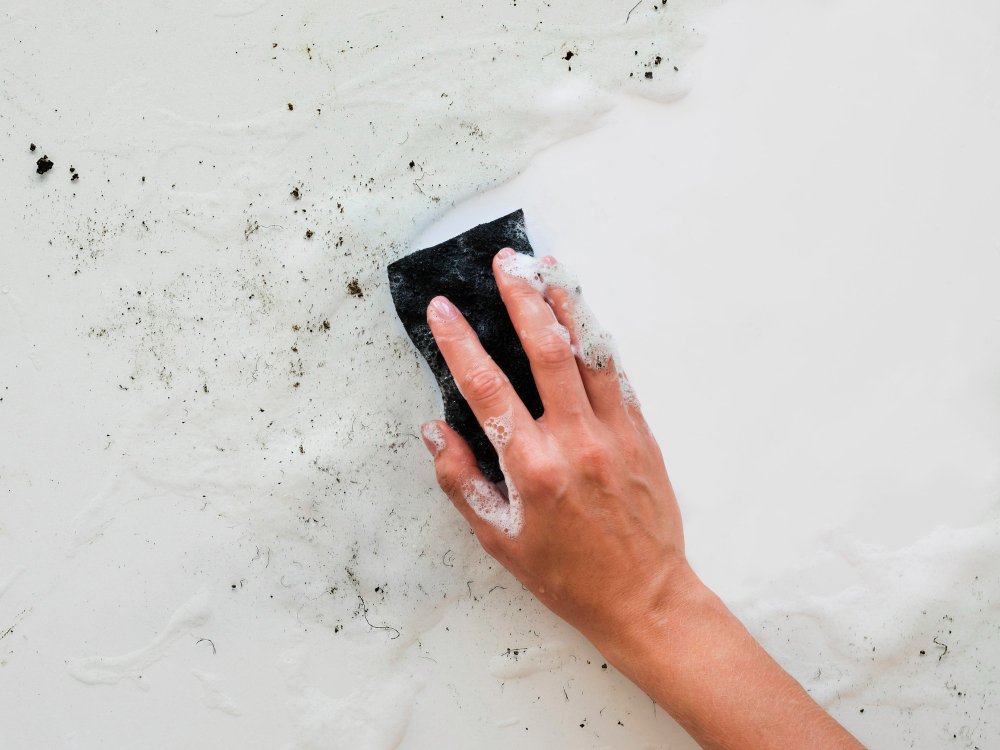
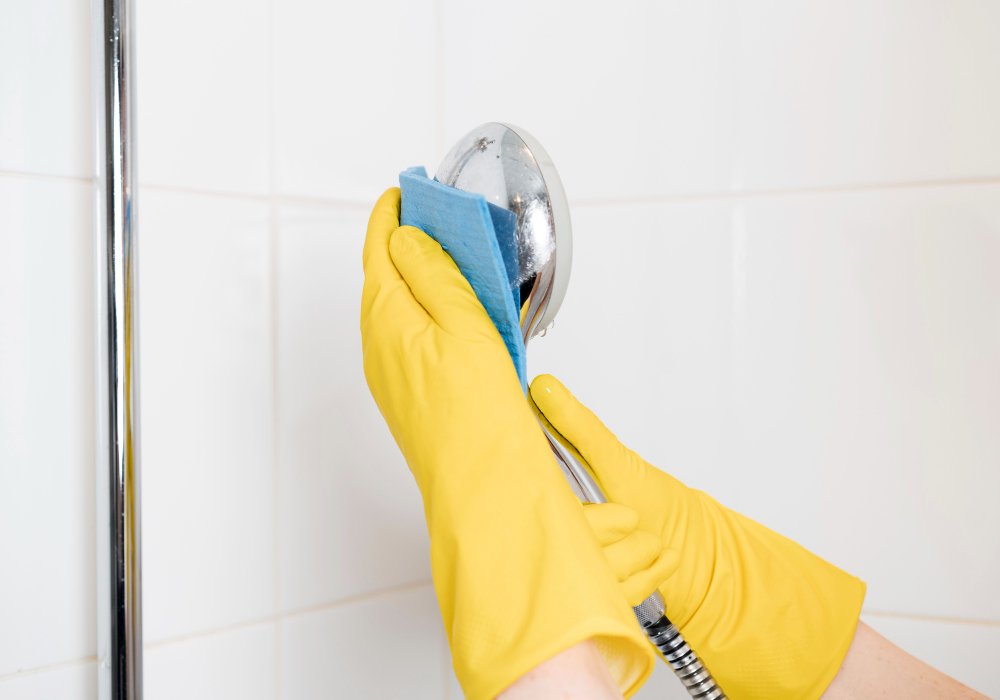
Safety Measures While Removing Mould
It would be best if you keep some safety precautions in mind while removing mould, such as:
- Use eyewear and long rubber gloves, and cover your mouth and nose with a mask for protection against spores
- Open the windows for better ventilation
- Close the doors to prevent the spread of spores to other home parts
- Avoid removing any mould caused by contaminated water or sewage without professional guidance and appropriate safety measures
- Wash your clothes with warm water right away after mould cleaning
- Throw away cloths, rags, and sponges used for cleaning mould in durable bin bags
- Wet the mouldy areas with a sprayer to avoid its spread
- Set up an old fan in the window for ventilation
How to Prevent Mould Growth in Bathroom
- Make sure to keep the bathroom ventilated by keeping a window open
- Utilise an extractor fan/air dehumidifier during or after the shower
- Keep the door open when the bathroom is not in use
- Wipe down the walls and surfaces after taking a bath or shower
- Clean the corners to avoid moisture accumulation
- Open the shower cabinet door to allow moisture to escape
- Spread the shower curtain so that it can get dry
- Use a shower screen to catch moisture and clean it regularly
- Heat the bathroom during the day to keep its temperature from 21 to 23 degrees
- Avoid wet laundry in the bathroom
- Paint the walls with mould killer or steriliser
- Prevent mould growth by using an emulsion mixed with a fungicide before painting the bathroom
When to Hire a Professional?
You can remove small traces of mould, but you must hire a professional if it is witnessed inside the silicone seal. In that case, it is not superficial and embedded in the silicone, which cleaning cannot remove. Silicone joints require renovation; in some cases, tiles need replacement to stop mould growth and its spread.
